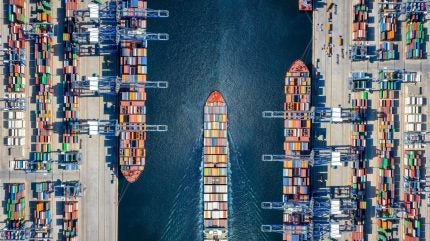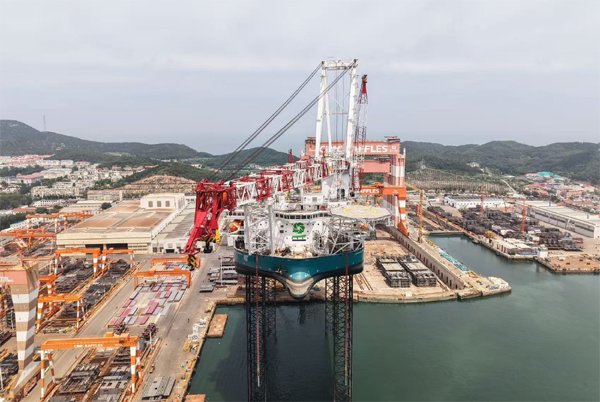

East Asian ports have recorded improved performance and led the global rankings in 2024 even as overall performance slid between 2020 and 2024, according to the latest Container Port Performance Index (CPPI).
Ten of the top 20 ports in the 2024 CPPI rankings are located in China, as per the report.
Discover B2B Marketing That Performs
Combine business intelligence and editorial excellence to reach engaged professionals across 36 leading media platforms.
The report cites the Red Sea crisis, disruptions at the Panama Canal, and ongoing effects of the Covid-19 pandemic as key factors behind the overall performance decline. Efficiency gains during 2020–24 varied by region and income level.
The CPPI, now in its fifth edition, is published by the World Bank and S&P Global Market Intelligence. It tracks trends in port efficiency from 2020 to 2024.
South Asian ports recorded a strong recovery in 2023 and were the only World Bank region to post a higher average CPPI in 2023 compared to 2020. The region, however, also faced impacts from the Red Sea crisis.
The report notes that while average CPPI scores between 2023 and 2024 declined in most regions, Europe and North America maintained similar port performance levels in 2024 compared to the previous year.
North America and Europe saw the greatest impact during the Covid-19 pandemic, with North American ports recording their lowest global CPPI scores in 2022 before stabilising by 2024.
Middle East and North Africa ports held top ranks in 2020 but registered a noticeable decline in 2023 and 2024 due to Red Sea crises, stated the report.
Ports in Sub-Saharan Africa continue to face persistent challenges tied to limited automation and weaker hinterland connectivity; conditions worsened by the Red Sea crisis led to performance drops at Durban and Cape Town due mainly to increased vessel waiting times at anchor rather than any change in berth handling times.
World Bank Transport global director Nicolas Peltier-Thiberge said: “Even amid the multiple shocks, developing country ports are finding ways to adapt, improve, and maximise value.
“It’s a reminder that with better planning, technology, and cooperation across the logistics chain, ports can make significant strides in their efficiency.”
According to the report, improvements were not limited to large ports in high-income countries.
Ports in countries such as Senegal, India, Türkiye, Egypt, and Ecuador also advanced their scores and rankings during this period.
The report links these gains to “political commitment, partnerships with global terminal operators, streamlined trade procedures, and, in some cases, targeted investments from financial institutions”.
The latest CPPI edition benchmarks 403 container ports worldwide using data from more than 175,000 vessel calls and 247 million container moves.
The index focuses on total vessel time spent in port, which it identifies as a core measure of operational efficiency for global trade.
This year’s report introduces a multi-year trend analysis for the first time, enabling a review of performance changes at individual ports over the last five years.
S&P Global Market Intelligence port intelligence & analytics global head Turloch Mooney said: “The CPPI, and its underlying data, serves as a diagnostic tool, enabling stakeholders to pinpoint structural inefficiencies and develop strategies for enhancing port operations.
“As we navigate an increasingly complex global shipping environment, understanding and improving port performance is essential for economic growth and competitiveness.”
The report highlights that implementing continuous crane operations, optimising crane deployment, and adopting digital platforms for integration with customs and logistics partners can improve competitiveness and resilience.
It also notes that quick turnaround times for ships are necessary to maintain low logistics costs and efficient supply chains, supporting the ongoing reliability of ports in trade.
Additionally, it highlights that efficient port operations contribute to fuel and emissions savings for vessels, positioning the index as a useful tool for shipping decarbonisation efforts.



